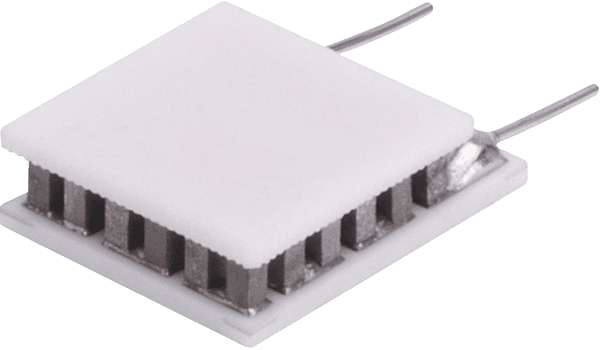Laird Thermal Systems has launched the enhanced OptoTEC™ OTX/HTX Series of miniature thermoelectric coolers designed for high-temperature environments found in telecom, industrial, autonomous and photonics applications. Featuring next generation thermoelectric materials, the OptoTEC OTX/HTX Series offers a 10% boost in cooling capacity, greater temperature differential and higher efficiency than standard thermoelectric coolers.
The high-performance, solid-state cooling devices are specifically designed to control the temperature of heat-sensitive optoelectronic components used in laser diodes, optical transceivers, LiDAR, CMOS and Infrared Range (IR) sensor applications.
Optoelectronic devices, such as laser diode packages, can reach operating temperatures as high as +85°C in an outdoor or air restricted environment. Whether used for fiber optics in telecommunications, industrial processing, or autonomous systems, temperature stabilization is key to maintaining the laser diodes’ peak performance and ensuring long-life operation. Thermoelectric coolers utilize the Peltier effect to keep sensitive optical components below their maximum operating temperature. By reversing polarity, thermoelectric coolers have the ability to heat or cool, which allows for a temperature control accuracy of up to ±0.01°C under steady state conditions.
In footprints as small as 3 X 4 mm, the OptoTEC OTX/HTX Series offers high heat pumping capacity and improved temperature stability for optoelectronic applications with tight geometric space constraints. Offering up to 10 Watts of cooling power, the OptoTEC OTX/HTX series maintains a temperature differential ΔTmax (Qc = 0) of up to 82°C with a hot side temperature at 50°C. The product series has passed Telcordia GR-468 CORE qualification to withstand harsh mechanical and environmental test standards and manufacturing process controls have been enhanced to ensure high repeatability and long-life operation.
“Temperature stabilization of optoelectronic components in high temperature environments is no easy task,” said Andrew Dereka, Thermoelectrics Product Director at Laird Thermal Systems. “Our OptoTEC OTX/HTX series uses new thermoelectric materials and enhanced process controls to meet the demands of the optoelectronics industry by offering higher cooling performance in a miniature form factor”
The OptoTEC series is available in two versions. The OTX thermoelectric cooler is designed for operating temperatures up to 120°C while the HTX thermoelectric cooler uses a higher temperature construction to operate in temperatures up to 150°C. Custom configurations are available to accommodate metallization, pre-tinning, ceramic patterns, and solder posts.
To learn more about thermal management in optoelectronics visit here. And here.
